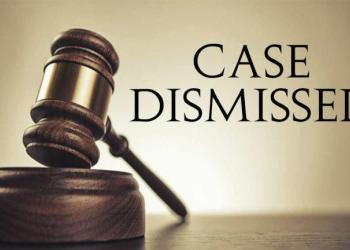
Sloppy investigations and unprepared prosecutions can result in sanctions and dismissal
It is Sixth Amendment violation to place an undercover officer into a jail cell with an already charged defendant for the purpose of pumping that defendant for incriminating statements. Intentional Miranda violations will result in the suppression of any statements made by the defendant. The failure of law enforcement to collect and/or preserve relevant evidence may, in some circumstances, result in adverse court rulings. Failure to provide a defendant with the details of plea bargains with co-defendants’ constitutes Brady error, at least when it includes a requirement that the co-defendants testify against the defendant. Failing to properly record and preserve a co-defendant’s interview with law enforcement, at least when that co-defendant is expected to testify against the defendant, may be a constitutional due process violation. Late discovery provided to the defense may result in sanctions imposed upon the prosecution. Requiring a co-defendant, as a condition of a plea bargain, to testify truthfully, does not, by itself, constitute “coerced testimony;” i.e., that he testify to certain facts irrespective of their truth. Egregious errors by the prosecution may result in the dismissal of a criminal case, depending upon whether, as a result, the defendant will be able to obtain a fair trial.
In a scenario reminiscent of a Three Stooges episode, co-defendants Finley Fultz (referred to herein as “defendant”), Nathan Philbrook and Daniel Devencenzi (“co-defendants”), all residents of the State of Nevada, decided it would be a neat idea to cross over into California (County of Nevada, specifically) to steal marijuana from some of the growers there. A fourth co-conspirator was Amber N—Philbrook’s wife—who limited her assistance to finding potential targets via “Google Earth,” pinpointing specific greenhouses by scanning aerial satellite views of northern California. Philbrook and Devencenzi had already successfully stolen marijuana before. On July 6, 2014, defendant asked if he couldn’t get in on the fun. They decided to target a greenhouse in Penn Valley, California, County of Nevada, that Philbrook and Devencenzi had hit just a week earlier. So with defendant and Philbrook in defendant’s truck, and Devencenzi following them in his own truck, the Three Stooges headed off to steal the products of another’s labors. Cellphone records showed that Philbrook and Devencenzi stayed in touch during this trip, with their cellphones pinging off cell towers on the way to, and near, the greenhouse. There was no available record of defendant’s cellphone usage during this time span in that he had a cellphone obtained through Cricket Wireless which retained usage records for only 180 days. Reaching their target at some time just before 1:00 a.m. in the morning of July 7th, Philbrook—armed with an AR-15style handgun equipped with a laser light—entered the greenhouse by the back door. Devencenzi waited outside the back door. Defendant—also armed, but with an AR-15 rifle—walked around to the front of the greenhouse. Unbeknownst to any of them, the greenhouse owner had hired a new employee—named Isaac Zafft—who was asleep at the time inside the greenhouse. Woken up by Philbrook’s entry through the back door, Zafft fled out the front where defendant—perhaps startled by Zafft’s sudden appearance—shot him four times at close range (2 feet), killing him. Upon their return home, defendant and Philbrook told Amber what defendant had done. During the subsequent investigation by the Nevada County Sheriff’s Department, investigators were alerted to defendant’s, Philbrook’s, and Devencenzi’s involvement in Zafft’s murder by an anonymous tip made several months after the murder. It was soon determined that Amber was the anonymous tipster. Amber was interviewed three times by an investigator, each interview being recorded. In exchange, she was provided with immunity. Amber told the investigator that Philbrook, Devencenzi, and defendant were responsible for Zafft’s murder, with defendant being the actual shooter, while also appearing to minimize her own involvement. During one of the interviews, photographs of her shoes (or shoeprints made from those shoes) “may have (been) taken” (likely for comparison purposes to footprints left at the murder scene). All three defendants were subsequently arrested and interviewed. When defendant was interrogated by investigators, the questioning took place in three segments; a portion before defendant was informed of his Miranda rights, a portion after defendant was advised of his rights and waived them, and a portion after defendant invoked his right to counsel while being interrogated, the investigator ignoring the invocation. In pretrial motions, the trial judge suppressed all his statements, finding them to be in violation of his Miranda rights. The People did not contest this ruling on appeal and is therefore not further discussed. All three defendants were charged in state court on July 12, 2016, alleging that they murdered Zafft during a robbery, with the added allegation that defendant personally used a firearm. Shortly after the filing of a complaint, the Nevada County District Attorney’s Office had the clever idea of placing an undercover law enforcement officer in defendant’s jail cell for the express purpose of eliciting from him incriminating statements concerning the murder. In later pretrial motions filed by defendant, this was belatedly agreed by the prosecution to have been a violation of defendant’s Sixth Amendment right to counsel (See People v. Engert (1987) 193 Cal.App.3rd 1518.), so is also not discussed further herein. Before trial, co-defendants Philbrook and Devencenzi pled guilty based upon their agreement to testify against defendant. During defendant’s trial, a number of problems hampered the prosecution, as discussed below. One of the issues raised during trial stemmed from the prosecution, on the first day of trial, having the Sheriff’s Department request a new search warrant for defendant’s cellphone records, going to a different judge than the trial judge in this case. This was the second search warrant issued for defendant’s cellphone records. This one, however, revealed additional information not known before, tending to prove that defendant’s phone had connected with Philbrook’s phone before and after their ill-fated trip to California. Defendant was not made aware of these new records until the morning that the prosecution sought to introduce expert testimony concerning these records. Upon defendant’s objection, the trial court ruled this to be a “discovery violation.” As a result of this and other problems (as discussed below), the trial court initially granted defendant’s motion for a mistrial (meaning they would have to begin the trial all over again with a new jury). However, after further motions, the judge granted defendant’s motion to dismiss (meaning the case was over and the defendant would go free). The People appealed.





